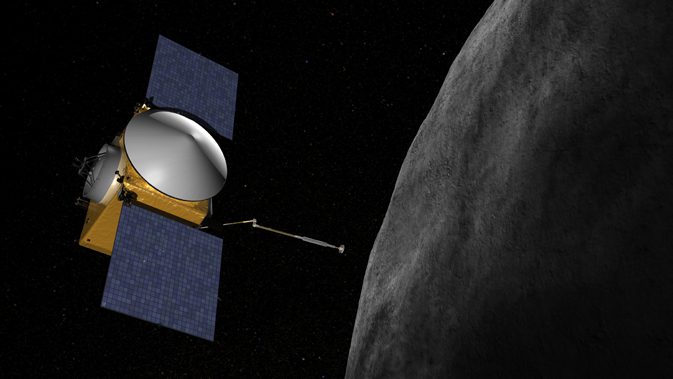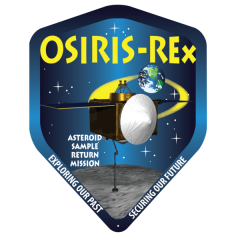
With three years to go before launch, NASA has selected United Launch Services LLC of Englewood, Colo., to launch its Origins-Spectral Interpretation-Resource Identification-Security-Regolith Explorer (OSIRIS-REx) spacecraft. Under the terms of the $183.5 million contract—which includes payload processing, integrated services, telemetry, and other launch support requirements—the mission will fly from Space Launch Complex (SLC)-41 at Cape Canaveral Air Force Station, Fla., aboard an Atlas V rocket.
It has been an exciting few months for the $800 million OSIRIS-REx, which will embark on a seven-year voyage to retrieve samples from the asteroid Bennu and return them to Earth. Late in April 2013, the asteroid received its new name—which honors the heron-like firebird of ancient Egyptian lore—and in May NASA announced that the mission to explore it had passed a key confirmation review and had been cleared to progress into the spacecraft development phase. At the time, OSIRIS-REx project manager Mike Donnelly of NASA’s Goddard Space Flight Center in Greenbelt, Md., noted that passing the review gave the agency “an executable plan to return a sample from Bennu” and that the next challenge was to actually execute that plan.

Known until earlier this year by the rather drab nomenclature of (101955) 1999 RQ36, Bennu was renamed after a contest won by 9-year-old Michael Puzio of North Carolina. Discovered in September 1999, the asteroid is a third of a mile in diameter and takes about 1.2 years to circle the Sun. Its path brings it close to Earth every six years, though not close enough to pose any risk of a collision. In 2018, two years after launching from Earth, OSIRIS-REx will rendezvous with Bennu and spend 505 days mapping its surface from a distance of 3 miles. This will enable investigators to zero-in on a possible sampling location, and the spacecraft will approach the asteroid, extend its robotic arm, and retrieve a specimen of between 2 ounces and 4.4 pounds.
The Obama Administration’s policy for NASA is to visit and capture an asteroid and bring it into cislunar space for visitation by astronauts, perhaps as soon as 2021. The mission of OSIRIS-REx is expected to contribute enormously to the techniques and technologies needed to accomplish such a feat. Since pristine, carbonaceous asteroids like Bennu are thought to represent conditions at the very dawn of our Solar System, the opportunity to deliver these primordial samples directly into the hands of scientists is expected to yield important clues about the origin and evolution of the Sun’s realm. Assuming the sample-capture process goes well, the OSIRIS-REx return capsule will re-enter Earth’s atmosphere in 2023 and land at the Utah Test and Training Range.
Developed by the University of Arizona’s Lunar and Planetary Laboratory, together with NASA-Goddard, the spacecraft will be fabricated by Lockheed Martin Space Systems. “The entire OSIRIS-REx team has worked very hard to get to this point,” said Dante Laurettta, the mission’s principal investigator at the University of Arizona at Tucson. “We have a long way to go before we arrive at Bennu, but I have every confidence when we do, we will have built a supremely capable system to return a sample of this primitive asteroid.”
Want to keep up-to-date with all things space? Be sure to “Like” AmericaSpace on Facebook and follow us on Twitter:@AmericaSpace



